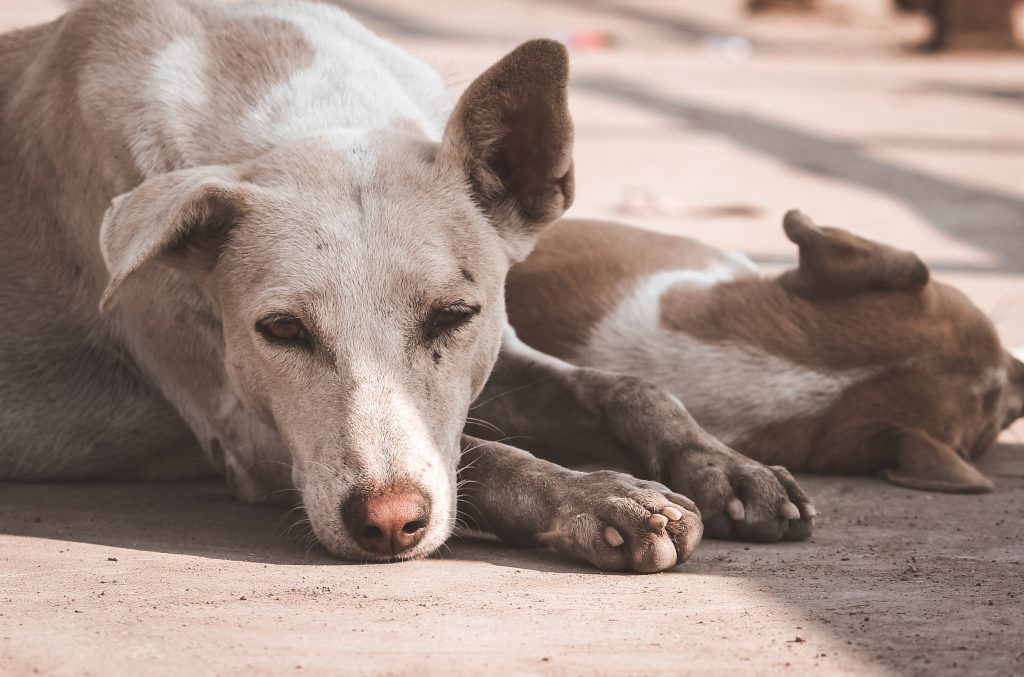
Posts by:
Dr. Nancy Kay, DVM, DACVIM
Dog Diseases & Conditions A-Z
For some dogs, the car feels like a second home. Not only do they delight in going for rides, they love just hanging out in the car any chance they get. This is not the case for dogs who experience motion sickness. These poor pups dread car travel regardless of the destination.
Symptoms of dog car sickness
Vomiting is, of course, the tell-tale sign of car sickness or motion sickness. More subtle evidence that your best buddy is feeling queasy can include the following:
- Lip licking
- Heavy drooling
- Anxiety
- Subdued behavior
Cause of dog car sickness
Car sickness or motion sickness is super common amongst puppies, and may be associated with immaturity of the inner ear apparatus that regulates equilibrium and balance. While many dogs outgrow this problem, others continue to experience motion sickness throughout their lives. For some, this may become a conditioned response- the dog learns to associate car travel with nausea.
Tips for decreasing your dog’s car sickness
Although motion sickness does not have any long-lasting health consequences, it is certainly a major drag for the poor dog and the poor human who must clean up the mess. If your dog experiences car sickness I encourage you to take advantage of the following suggestions with hopes that your car rides together will become far more peaceful and enjoyable.
- Allow your dog to spend quality time in your car with the engine turned off. Spend these driveway moments with a peaceful, calm mindset and provide lots of positive reinforcement. Graduate from this step to sitting in a parked car with the engine running and lots of positive reinforcement. Next, come very short road trips- no more than going around the block. Gradually build up car travel time, ideally winding up at destinations your dog considers desirable.
- Travel when your dog has an empty stomach (no food for 4-6 hours). This means skipping a meal or timing your travel according to your dog’s feeding schedule.
- While driving, confine your dog using a crate or a seat belt setup designed specifically for dogs. Be sure to use a system that secures the crate in place. Less movement will lessen the likelihood of nausea.
- It is thought that facing forward may help prevent motion sickness. If using a crate, cover it in a fashion that prevents your dog from looking out other than in a forward direction.
- Try a different car. Here you go. I am giving you a reason to go out and buy that new car you’ve had your eye on! Can you imagine the auto dealer’s reaction to taking your dog going along on test rides? In all seriousness, if you do have access to more than one vehicle, see if one produces a more favorable response from your dog than the other. I can attest to the fact that I am much more prone to motion sickness in some cars than in others.
- Keep the car cool by cracking windows and/or using air conditioning. I am not an advocate of allowing your dog to travel with his head hanging out the window. There is too much potential for bodily harm, particularly to those precious corneas.
- Talk to your veterinarian about Cerenia (maropitant citrate), a drug that was developed specifically for the prevention of motion sickness in dogs. It is safe and effective and doesn’t cause drowsiness. Cerenia comes in a tablet form that is administered orally once daily. It works best when given two hours prior to travel.
- Over the counter medications developed for people with motion sickness are not as effective for dogs as is Cerenia. Additionally, most cause significant drowsiness. Do not use these products without first checking with your veterinarian.
- Ginger may reduce motion sickness for some dogs. Some people believe that feeding a ginger snap or two to their dog before travel does the trick.
- Aromatherapy with lavender has been shown to significantly reduce car ride-induced anxiety in dogs, according to an AVMA article. While not proven to lessen canine motion sickness, the reduction in anxiety may prove beneficial. Unless you detest the smell of lavender, this is certainly worth a try.
Questions for your veterinarian
- What do you recommend I try first for my dog’s motion sickness?
- If that doesn’t work, what shall I try next?
- Is there a medication that you suggest I try?
- Is it likely that my dog will outgrow this problem?





